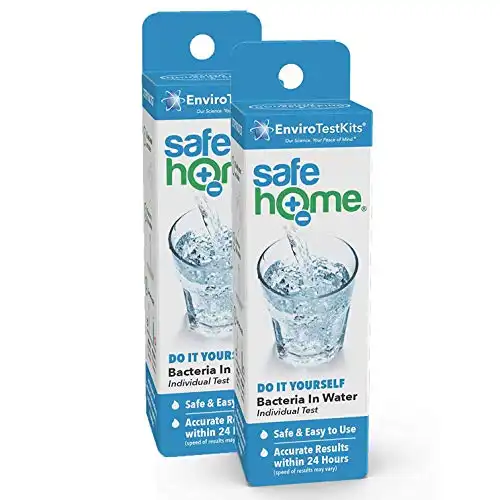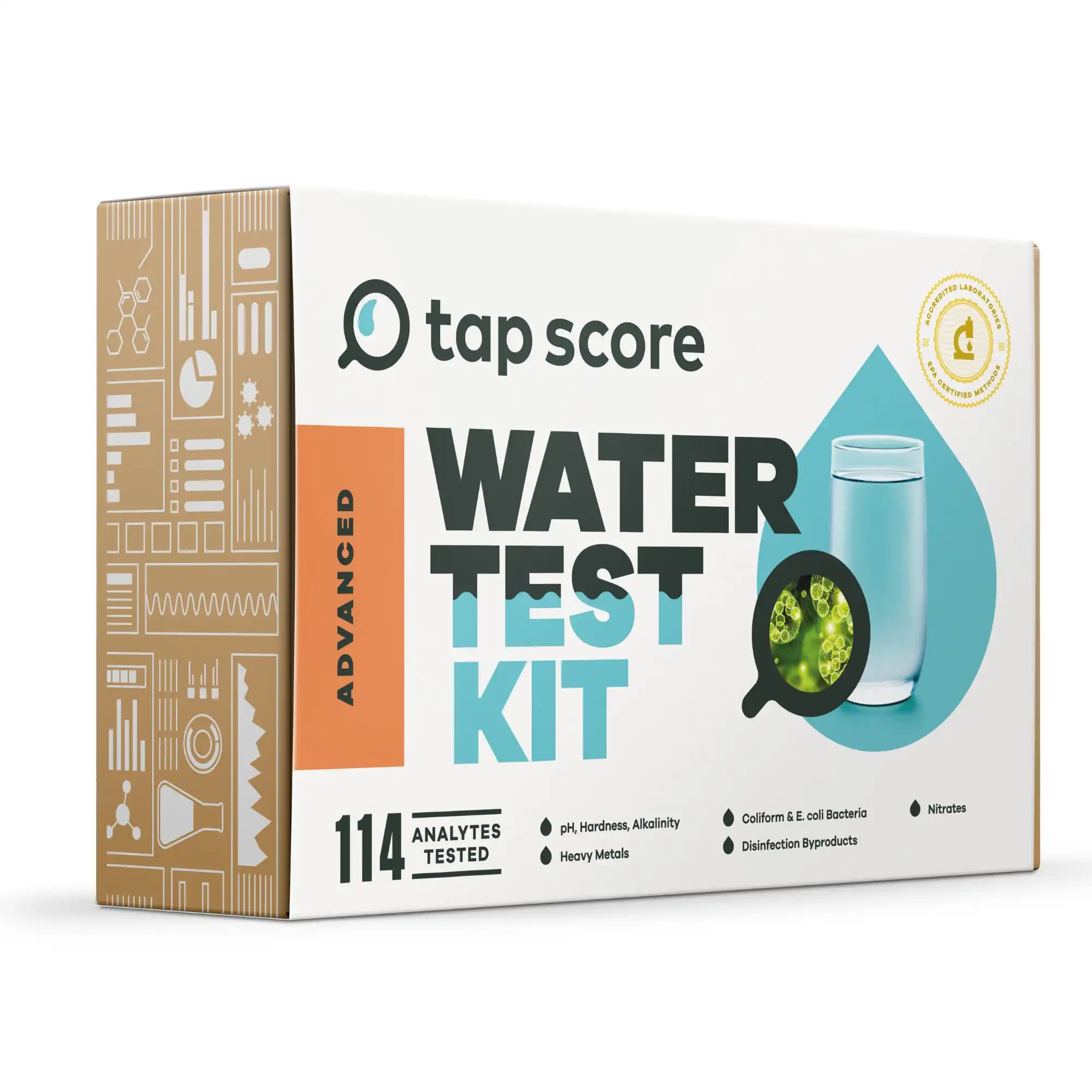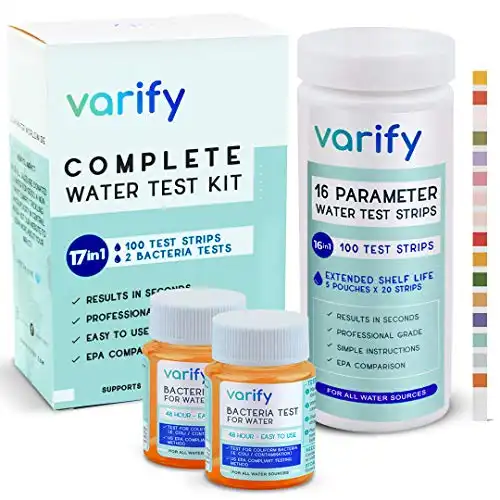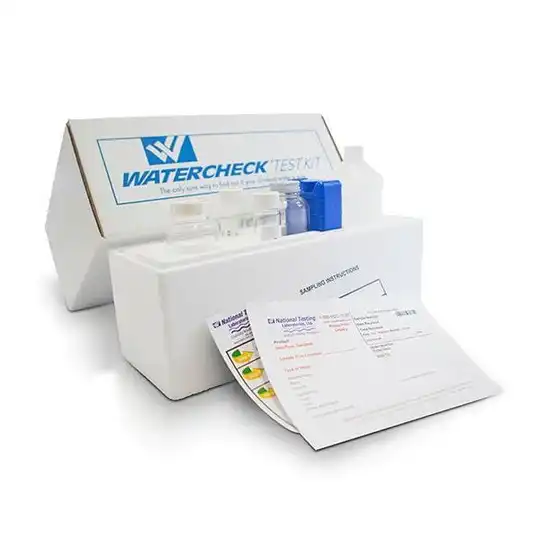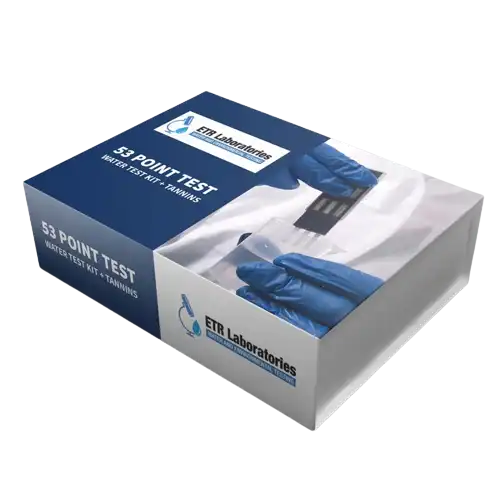Are self-test kits for bacteria worth it? When should you use a lab-grade test? We answer all your questions on testing for bacteria.
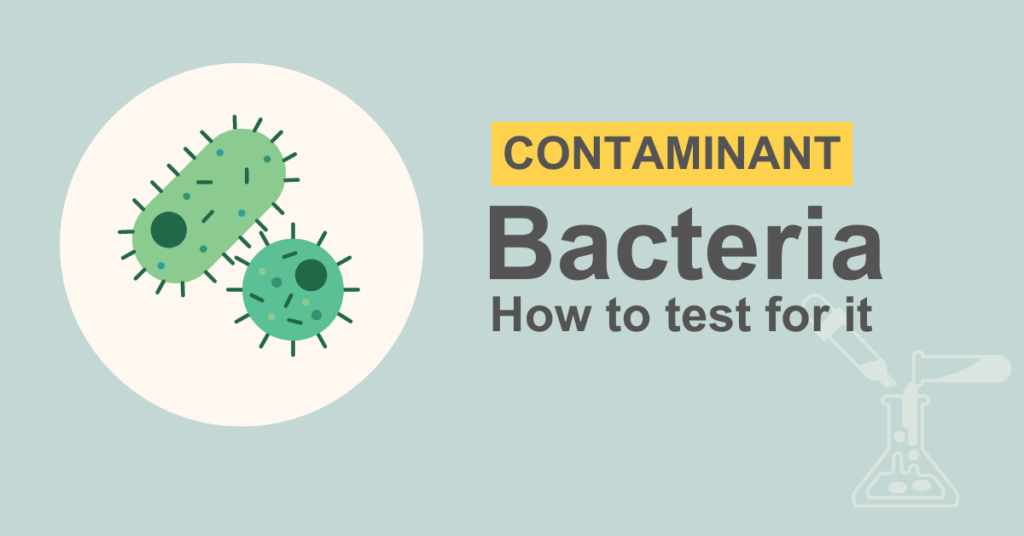
Testing well water for bacteria can be done with a $20 self-test kit on Amazon or send-way lab-grade test kit which will cost upwards of $150 bucks. Both can do a stellar job.
The big question is, when should you use which?
Here is TL;DR version:
If you want to test for one particular contaminant, bacteria in this case, DIY test kits are the most cost-efficient, accurate, and fast way to confirm whether or not you have a bacteria problem in your well water with a clear positive or negative result marked by different colors.
Testing for bacteria in well water is very easy, not with this kit alone but with other DIY test kits we’ve seen, what sets this one apart is that it's 24 hours quicker to get results than with others.
You can use this kit to test for bacteria alone, which is what makes it good as well. The results, marked in either green (positive) or yellow (negative), are easy to read.
Are you a new homeowner, planning your yearly water check, welcoming a newborn, or want a comprehensive water report, or maybe you want to test for specialized contaminants like VOCs, pesticides, or PFAS? In these scenarios, send-away test kits are your ideal solution.
This send-away kit delivers lab-tested measurements of more than 100 contaminants, including THMs (disinfection byproducts), some gases and oils, and plenty of VOCs.
In this article, we’re going to discuss the following points in depth. Specifically, we’re also answering the following questions:
1. At-home DIY self-test kits: Can they be trusted? If so, when should they be used? For which specific contaminants are they ideal? Are there any known issues with false positives?
2. Lab-grade test kits: How long does it take? How much does it cost? Should I use an accredited or certified lab? What specific contaminants or parameters will the lab test for?
3. Free water testing: Can the results be trusted? What parameters to test? What organizations in the community offer these services?
Here we go!
Testing for bacteria using DIY home test kits
I am a fan of DIY kits. I like them and believe they have their use, especially for contaminants like bacteria.
They’re particularly useful when you want to test one particular contaminant, like lead or bacteria.
The easier they are to read the better. For example, this safe home bacteria test kit is stupidly easy to use: Fill the container with water, give it a good shake, and after 24 hours (some take twice as long), green means positive for bacteria. Yellow means negative.
If the results are negative, you’ve got peace of mind that your water is bacteria-free and safe for use.
If the results are positive, get further testing with lab tests to confirm and also to see what else might be in your well water.
Next, let me address some common questions about DIY test kits you might have.
1. Can DIY test kits be trusted with bacteria testing?
Yes, you can. As long as you’ve collected your water and followed instructions as directed, you have no reason not to trust the test results, especially the dual-colored ones for their positive or negative results.
The problem I find is with the monochromatic colored charts (see test on the right of the image above). The strip color that falls somewhere in the middle of the color chart will be extremely hard to read with confidence. Safe to safe, even with good sight, the result can be fairly subjective and hard to read thus affecting your confidence in the results.
2. When should I NOT use DIY home test kits?
Here is when you should NOT use self-test kits:
1. You just bought a home or left your well unused for a long time. Get a comprehensive lab test to know exactly what’s in your water.
2. For your annual well water testing I would recommend you also use lab tests rather than home test kits.
3. If you suspect the presence of specific contaminants that require specialized testing (read: PFAS, VOCs, pesticides, radon, etc.).
4. There is a new baby in the house or someone with a compromised immune system. In this case, you should get a lab test so you can better be able to protect them.
5. When you want to perform a comprehensive water test. Because of how cumbersome the testing can get, and also how subjective the results can be, I would recommend not to use self-test kits in this case.
For any other cases, including routine water quality checks or pre-screening for a specific contaminant, they’ll serve you well.
3. Can I use DIY home test kits for testing bacteria?
I find DIY tests for bacteria are the easiest to read. This is because the results are either positive or negative, marked by totally different colors (e.g. yellow for negative or green for positive).
This is unlike the majority of the tests where the contaminant level (1 ppm, 5 ppm, 10 ppm, etc.) is indicated by different shades of the same base color which, under different light conditions and/or less than perfect eyesight, you can find yourself struggling to make out which color on the chart matches the strip matches from the results.
So if you’re testing for bacteria in your well water, then an initial pre-screening test can be done with self-test kits which you can read the results with confidence because it’s either positive (marked with green) or negative (marked with yellow).
For the other contaminants, unless you’re doing a random ad-hoc test for curiosity purposes, it might be a little harder to make out the reading from the chart, particularly when the strip color falls in the middle of the color chart.
4. How much do DIY home kits for bacteria cost?
You can expect to pay between $20 and $50 for at-home do-it-yourself test kits. Some of these kits are for one contaminant only (e.g. lead, bacteria, pH, etc.) but some can test up to 20 different contaminants.
5. Which DIY test kits do we recommend for testing bacteria?
There isn’t much difference between different kits for bacteria but there is a difference that sets one particular test kit apart from others – waiting time.
The Safe Home test kits, unlike its peers, can give you the results in as fast as 24 hours. Many of its competitors I have seen take up to 48 hours for results.
Testing for bacteria in well water is very easy, not with this kit alone but with other DIY test kits we’ve seen, what sets this one apart is that it's 24 hours quicker to get results than with others.
You can use this kit to test for bacteria alone, which is what makes it good as well. The results, marked in either green (positive) or yellow (negative), are easy to read.
You can use this kit to test for bacteria alone, which is what makes it good as well. The results, marked in either green (positive) or yellow (negative), are easy to read. The only thing you should make sure of not contaminating the inside of your water sample with your fingers, faucet, etc.
This varify test kit can be used to test for contaminants that are pretty common in well water - bacteria, hardness, sulfate, nitrate/nitrite, iron, copper, and more. Plus, it's really cheap!
In cases where your results come up positive, it might be wise to get a lab test that can then tell you in how much quantities these contaminants are. But if it comes negative, then you have a piece of mind and also saved at least $150 bucks.
Important: Use these DIY test kits for occasional screening, and not for your annual water testing or when you move into a new home.
Testing for bacteria using lab test kits
The alternative to a DIY test kit is a send-away test kit. With this method, you send away a sample to the lab for testing and then after a few days, you get your comprehensive lab results back.
Here is how it works:
1. Order the test kit online: Select and purchase the right water test kit. The well water kit will be different from to tap water kit.
2. Collect the sample: They send you a test kit with everything you’ll need to collect the sample.
3. Ship back for testing: You send it back to them (a mail label sometimes is included).
4. Get your lab results: In 3 to 10 business days, depending on the service, they send the report and results back to you.
These mailto lab kits can test more than 100 contaminants in your drinking water, from heavy metals (lead, mercury, and arsenic, etc.) to volatile organic compounds (VOCs) like chloroform.
Always make sure that the lab is accredited with federal or state EPA but public records info is not always readily available. You’d have to call the lab, if you can get through, to verbally confirm or dig through mountains of data on the EPA’s database to confirm the accreditation.
Below we’re recommending some of the best send-away kit companies you can use but before that, let’s answer some more pressing questions:
6. When should I use send-away test kits?
In question 2 above, I have discussed when you should NOT be using DIY test kits. In these instances, I would recommend you use a certified lab in your local area or send your water sample to the lab for more comprehensive testing, that is, use send-away test kits.
7. Are send-away test kit labs the same as local labs?
Many of the labs in your area produce testing kits and sell these as send-away testing kits.
For example, SimpleLab is an EPA-certified lab that produces Tap Score’s send-away kits and it further contracts hundreds of certified labs nationwide to do the tests for them.
National Testing Laboratories, one of the largest laboratories in the U.S., offers the CityCheck kit for testing in one of their many labs nationwide.
While you can take a 15-minute drive to your local lab with a water sample for testing, chances are the turnaround time and costs will be the same as using send-away test kits you can order online.
8. How much do send-away lab test kits for bacteria cost?
Expect to pay in the region of $150 to $350 for their comprehensive kits which in many cases can test for over 100 different contaminants in your well water. For specialized testing, for example testing for VOCs or PFASs, you can expect to pay upwards of $600.
9. Other than bacteria, what other contaminants will the lab test for?
Many of the lab kits will test for over 100 parameters, including heavy metals like arsenic, lead, and manganese, as well as inorganic compounds such as chlorine, fluoride, and calcium. Additional parameters, such as pH, turbidity, and alkalinity, are also tested.
Unless you need specialized testing for contaminants such as VOCs, PFAS, pesticides, or even radiation, this basic but comprehensive kit should cater to the majority of homeowners.
10. Which send-away test kits do we recommend for bacteria?
While there are many send-away test kit companies that can deliver reliable and accurate lab results, there are a few that go above and beyond like Tap Score.
Tap Score contracts with more than 170 EPA-certified labs nationwide and sends your water sample to the lab nearest to you for testing.
Beyond their accurate test results, here is what we liked more:
- Their water reports are the easiest to read. They’re written in plain language, explaining each contaminant in your water, and potential health risks and suggesting ways of addressing those with above EPA limits.
- Their online support is unlike any other. For any questions you might have, you’ll surely find helpful representatives with answers for you.
- The whole process of ordering a testing kit is seamless. From choosing the right test to ordering to sampling instructions, the process is simple and seamless.
This send-away kit delivers lab-tested measurements of more than 100 contaminants, including THMs (disinfection byproducts), some gases and oils, and plenty of VOCs.
This send-away kit delivers lab-tested measurements of more than 100 contaminants, including THMs (disinfection byproducts), some gases and oils, and plenty of VOCs.
Please note the kit above does not test for microbiological contaminants such as coliform and E. coli bacteria. If you’d like to test for this, I’d recommend SpringWell’s Water Test Kit + Tannins.
The results are just as accurate, and readable as well but not as easy to read as Tap Score’s results. Also tests for more than 100 contaminants in your water.
Unlike Tap Score, a comparable test kit offered by SpringWell starts at $129 (a little cheaper) and they also test 53 contaminants in your water. SpringWell is the middleman but they offer the same prices as the ETR laboratories, which is the certified lab that handles the testing.
Only measure 50+ contaminants in your water, including the most common such as coliform, lead, iron, nitrate/nitrite, hardness, TDSs, and many more.
Free water testing: How is it different?
Some municipalities and local health departments offer free water testing for private well owners, but often these are for one particular contaminant such as lead or E.coli. They’re hardly ever comprehensive.
You will also find some companies, whether your filter system salesman neighbor or even your local Home Depot, also offer free water testing with the intention to sell you water filters in case you have issues. While many of these companies conduct themselves beyond reproach, some might have questionable motives.
If you’re concerned about one particular contaminant such as lead or bacteria, and your budget is tight, you might wanna check with your county office if they offer any free water testing for private well owners.
